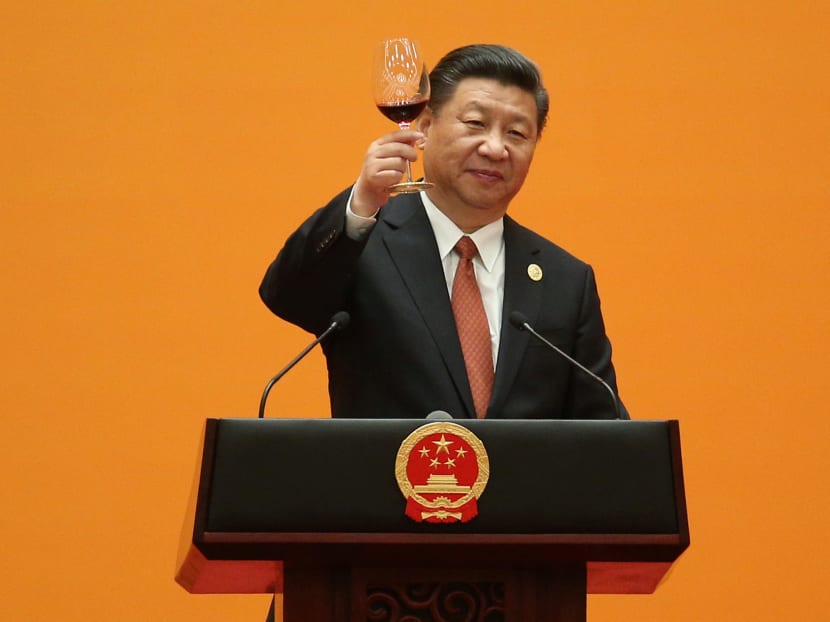China’s nuclear export ambitions run into friction
China is using infrastructure exports to build strategic relationships with a range of countries in Asia, Eastern Europe, the Middle East and Latin America.

China is using infrastructure exports to build strategic relationships with a range of countries in Asia, Eastern Europe, the Middle East and Latin America. Reuters file photo
China is using infrastructure exports to build strategic relationships with a range of countries in Asia, Eastern Europe, the Middle East and Latin America.
As part of its One Belt, One Road (OBOR) policy, Beijing has pledged more money than went into the post-war Marshall plan on high-speed rail schemes around the world in an effort to secure diplomatic allies and develop new markets.
The economic and diplomatic impact of its massive investment, however, remains questionable. This trend of geopolitically motivated investment is also be reflected in another one of Beijing's strategic investment efforts: Nuclear energy.
Although its scale is not yet comparable with the rail projects, China has signed numerous agreements with states in the OBOR sphere, as well as those further afield. Chinese companies are constructing reactors in Pakistan and Romania.
China is scheduled to build nuclear facilities in Argentina, the United Kingdom and Iran, and is bidding for further projects in Turkey, South Africa and Saudi Arabia. Framework agreements and discussions about reactor deals are under way in Kenya, Egypt, Sudan and Armenia. By providing technology, Beijing seeks to develop alliances with key states in a variety of regions.
It aims to provide long-term contracts to construct, operate, maintain, provide fuel, train staff, and develop infrastructure while establishing links to high-level government representatives. But will nuclear exports prove any more influential and successful than high-speed rail?
The combined cost of cancelled rail projects equates to roughly a third of the estimated US$143 billion (S$194 billion) in total planned investment for projects involving Chinese contractors.
As the FT highlights, some of the cancellations are the result of factors beyond China's control, such as civil war in Libya. Other cases have been caused by a lack of transparency on the part of Chinese companies, the inability of recipients to manage large amounts of debt, and alternative models of government that delay decision-making.
Factors beyond Beijing's control may also influence the success of its nuclear export strategy.
Global interest in nuclear energy is experiencing a lull, prompting valid questions about China's decision to invest in such technology as a long-term export market. Environmental consciousness is one reason for reducing reliance on nuclear energy.
Political decisions in South Korea and France - two key proponents of nuclear energy - highlight this evolving trend. In Seoul, President Moon Jae-in has decided to phase out domestic electricity production from nuclear power plants.
Mr Nicolas Hulot, France's Minister of Ecological and Social Transition, has also mooted efforts to cut the share of nuclear in its energy mix to 50 per cent by 2025, as required by a 2015 law. The significant costs of nuclear energy mirror the issues highlighted by rail projects.
Many existing nuclear projects are dependent on Chinese financing; China's Exim Bank is bankrolling 82 per cent of the cost of Pakistan's new reactors and is thought to be contributing to the construction of reactors in Romania alongside the Industrial and Commercial Bank of China.
In November 2015, China National Nuclear Corporation invested US$4.7 billion in Argentina's Nucleoelectrica. In the UK, China is to provide 33 per cent of the estimated £20 billion (S$35.6 billion) for the Hinkley Point C project.
In exchange, Beijing has been promised the opportunity to build its indigenously developed nuclear technology in Essex.
The open question is whether such investment will eventually pay off. The current leader in the nuclear export market, Russia's Rosatom, is reportedly shifting focus to hydropower and wind turbines rather than its usual reactor business.
Speaking at the Technoprom-2017 conference in Novosibirsk, the deputy general director of Rosatom Vyacheslav Pershukov suggested that the export market for nuclear reactors has been exhausted.
The various setbacks to traditional nuclear energy providers, namely Areva, Toshiba and Westinghouse, suggest that market competition is dwindling.
South Korea's proposed diversification away from nuclear will also have significant ramifications for its nuclear export industry, given the key role government support plays in getting contracts agreed.
Time will tell whether these developments represent an opportunity or a forewarning for China's grand nuclear ambitions. Beijing is committed to sustained development of nuclear energy domestically but will hope that the nuclear vision remains bright in the untapped international markets with which it has signed exploratory agreements.
As long-time proponents of nuclear are questioning its future role, and seasoned nuclear exporters are seeking to diversify, however, China's nuclear efforts could be destined to go down the same track as its high-speed rail strategy. FINANCIAL TIMES
ABOUT THE AUTHOR: Dr Matthew Cottee is research associate, Non-Proliferation and Nuclear Policy Programme at the International Institute for Strategic Studies






